All about plumeria
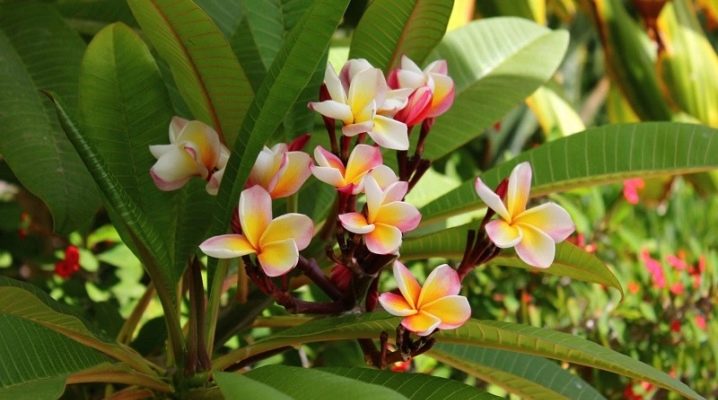
The exotic plumeria tree is not without reason so popular among indoor plant lovers. Any house, greenhouse, winter garden will turn this flower into a corner of the paradise island, which will remind you of relaxation and serenity.
Large white, yellowish or pink flowers look great in any interior and exude a delightful scent that will surprise your family or guests at home. Have you decided to have a rare plant? First, you need to find out the features of its content and the conditions for success in growing in order to avoid annoying mistakes in advance.
Description
Beautiful plumeria flowers (or frangipani, as it is more often called) you have probably seen in advertising for cosmetics, perfumes or exotic islands, as well as in brides' hairstyles. They are, indeed, not only spectacular, but also useful in their properties.
Plumeria is a powerful aphrodisiac; it has been used in perfumery for more than one hundred years as one of the main components of aromatic compositions. And seed oil is used for medicinal purposes and in cosmetics.
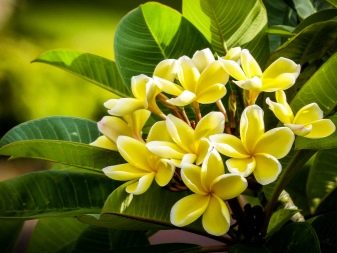
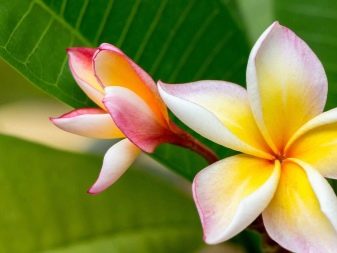
Plumeria is a welcome indoor flower for many gardeners. However, in our usual indoor format, only 3 out of a dozen wild species of this exotic representative of the flora are found. In nature, plumeria grows in the humid and warm climate of the southern latitudes. It is found in the countries of Latin America, Southeast Asia, India, on the island of Sri Lanka and a number of other islands of the warm Indian Ocean. Under natural conditions, the plant is quite powerful, it can be called a tree. We are accustomed to flowers of a bright snow-white color with a yellowish base of petals, but there are also crimson, and pink, and other bizarre species.
The plant is scientifically classified as eukaryotes, flowering gentian from the kutrovy family, evergreen. Succulent dark leaves with a waxy bloom have an oval elongated shape or, less often, a lancet (somewhat resemble the large waxy leaves of rubber ficus). The flower consists of 5 oval petals, sometimes cupped at the edges. After the bush has faded, long pods appear in place of the pollinated flowers, in which the seeds ripen. These fruits of the plant are inedible, but with their help the plumeria can be easily propagated, since the seeds germinate without problems and very quickly.
The aroma of the flower is interesting. Some of its varieties do not have nectar, but thanks to the smell, they still strongly attract pollinators. The abilities of the plant were appreciated even by medieval perfumers, who began to use it in the preparation of the most expensive and desired compositions. The first to do this was the Italian Frangipani, after whom the flower was named. The scent of a flower changes with the time of day, with different weather and in accordance with the different conditions in which it grows. So, the smell can vary from fresh watery, reminiscent of a lily, to lemon (with hints of other citrus fruits), and in its most intense form, these are jasmine notes or tones of southern unusual spices.
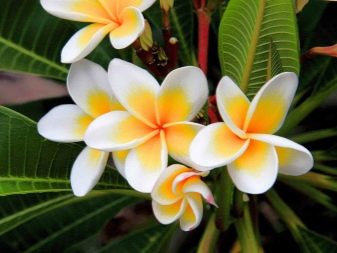
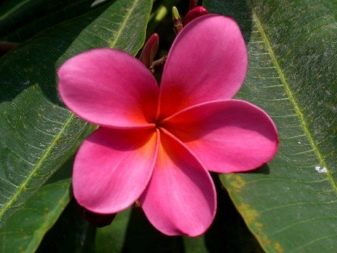
Views
The frangipani tree has a dozen varieties, and this is only in the wild, not counting specially bred varieties. It is popular and known all over the world, it is not cheap - one stalk from 10-15 US dollars. Also known as Hawaiian or Thai frangipani. In many countries, frangipani are given special symbolic meaning.So, in Buddhist countries it is a flower of immortality, which is generously decorated with temples and accompanied by sacred rites. And in the countries of Latin America, the plant is given a special meaning associated with its ability to cause passion and lust due to the abundance of pheromones of natural origin contained in it.
Red plumeria is appreciated by lovers of the most unusual colors. A bush with lignified branches grows no more than 50 cm in height. Its powerful juicy leaves and peduncles of various exotic shades look beautiful. Although this variety is called red, flowers can be anything from orange and crimson to purple and maroon with black. White plumeria is best known and is often chosen for potted cultivation at home. In its natural form, it lives in the Antilles and reaches a height of 10 meters. The plant has large ficus-like leaves and a showy bloom with large white flowers with 5 petals and a yellow center. Pink plumeria is another valuable species of exotic beauty, which is not yet very common in our country.
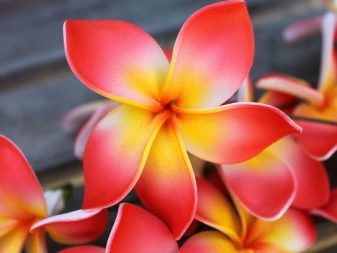
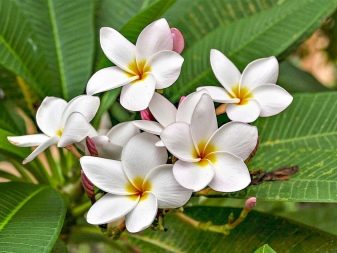
Blunt Plumeria is another ideal for home cultivation as it is quite compact. Even in its natural habitat, the size of a tree is not more than 2 meters in height. The plumeria does not begin to enter the active flowering phase immediately. You need to have patience. Adult plants grown from seeds bloom at the 4th year of life. Blooming of buds begins in the middle of summer, and beautiful fragrant flowers will delight with their exquisite appearance until the end of autumn, with which the plant begins a dormant period.
If the indoor beauty does not bloom, there may be several reasons for this.
- Deepening of the growth point of the bush during transplantation.
- Lack of sunlight. Plumeria require bright lighting with direct sunlight.
- Low temperature content. Plants native to the tropics are very thermophilic. Especially the roots should not be allowed to freeze.
- Lack of a dormant period or improper conduct.
- Unknowingly buying hybrids.
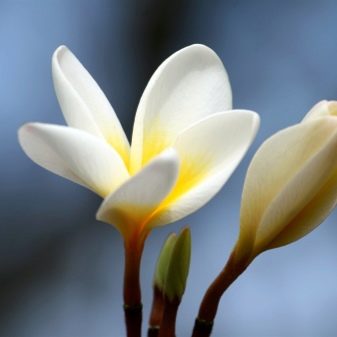
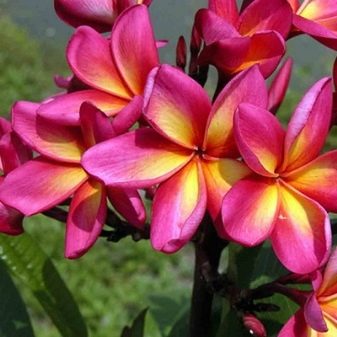
Landing
The optimal and well-proven way to grow an exotic flower is to plant from seeds. Wherein it is worth remembering that in this case, the plant will bloom no earlier than 3-4 years later, while planted from cuttings can bloom under favorable conditions in the same year. Frangipani seeds are large and easy to plant. They look like nuts - hard boxes. Moreover, when planting in the ground, you definitely won't be mistaken: at one end of the "nut" there is a thickening - this is the future root, and from the other end there is a light "tail" - this sprout should be above the ground when planting. Plant plumeria in a shallow long greenhouse container with a lockable lid. To do this, we take a light neutral soil (earth from a store is suitable) mixed with sand, and moisten it. In wet soil, you need to plant seeds sprout up, without burying it. This future growth point should be visible from the ground.
It is necessary to choose a well-lit and warm place with a temperature of about 25 degrees. The earth is periodically watered, preventing it from drying out. The greenhouse is covered with a lid or special film. In this case, it is necessary to let the sprout air once a day. After about a week, the seeds will take root and can be planted in pots in their primary location. If you purchased an already grown flower in a store, it will need acclimatization. The first 1-2 weeks it is kept in shade and gradually accustomed to bright light and warm temperatures at home.
The plant needs to be sprayed daily. After that, you can already put the pot with plumeria in a permanent place with a fairly bright light.

Care
Growing plumeria at home requires some experience in floriculture and a willingness to devote enough time and attention to the plant and its care. The fact is that a flower from tropical latitudes for successful breeding requires the creation of a home conditions close to its natural habitat.
To grow a beautiful bush with magnificent flowers, you need to regularly and properly care for it, provide enough light, moisture and nutrients, protect the roots from the cold and follow a number of other recommendations of experienced flower growers.
It may seem difficult to make a whimsical beauty bloom, but this is only at first glance. If desired and due love for your occupation, you will receive gratitude and return from the plumeria in the form of fragrant paradise flowers that will remind you of a vacation on the tropical islands, creating an atmosphere of relaxation, happy love and well-being in your home.
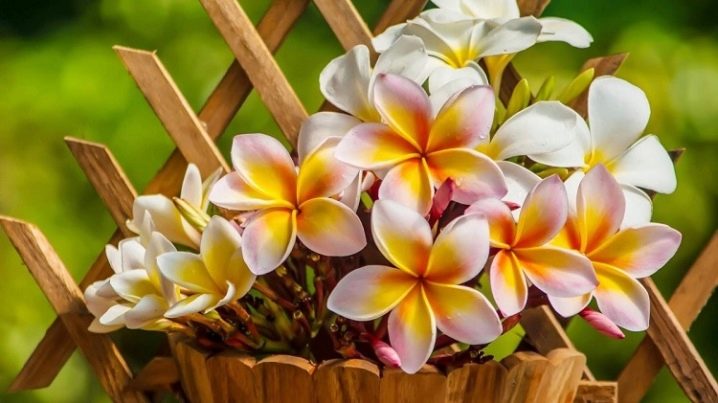
Conditions
Frangipani at home needs to create very good lighting. It is best to place the planter on the south side or on a window facing the south-east side. Otherwise, the flower will lack light, it will not develop correctly and will not bloom. Plumeria is not afraid of direct sunlight, on the contrary, it loves them. This is a prerequisite for the opening of flower buds.
In the warm season, the plant must be taken out into fresh air (in mild climates, it grows in a tub all year round). In the cold part of the year, it is important to protect an ornamental flowering plant from cold and drafts, especially the roots - they must always be kept warm, otherwise they can rot. Experienced growers advise to insulate the pot and even put it on a sheet of foam or other insulation. The comfortable temperature for the growth and development of frangipani is in the range of + 25 ... 30 degrees. The hotter climate is harmful to the plant, as well as the cold below + 12 ... 14 degrees.
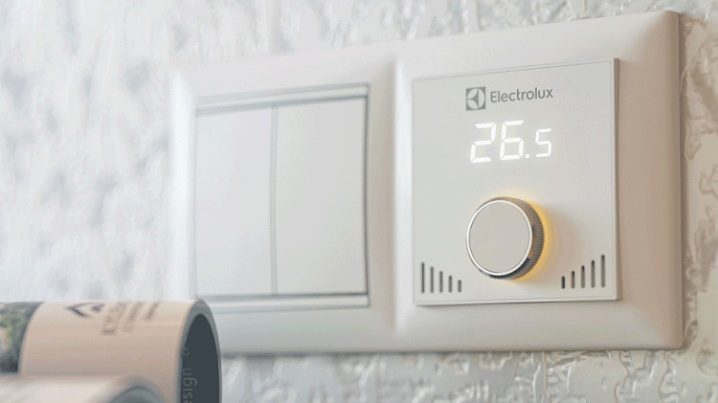
Watering
A plant from the humid tropics needs constant, regular and abundant watering. It is also necessary to maintain a sufficiently high air humidity. Water the flower every two days with settled soft warm water (rain can be used). The soil should not dry out, remaining constantly moisturized. At the same time, it is necessary to avoid stagnation of water in the roots by creating a good drainage layer in the pot. In winter, plumeria is watered sparingly, no more than once a week.
If it is possible to install a humidifier in the room and plant a flower in a pots with automatic watering, do it. So you will give the plant the opportunity to develop correctly, and you will save yourself from unnecessary care. During the period of active growth in spring and summer, in the heat, it is recommended to spray the leaves of the plant at least every other day, while avoiding getting water on the flowers.

Top dressing
An exotic guest needs fertilization almost all year round. In winter, less often - once every 1-1.5 months. In summer and spring, in the phase of active growth and development of buds, fertilizers are applied twice a month. To do this, you can purchase ready-made compositions for decorative flowering indoor plants. Alternatively, an alternation of organic nitrogen compounds and minerals is suitable. In general, it is recommended to slightly reduce the dosage of the active substance compared to that indicated on the original packaging.
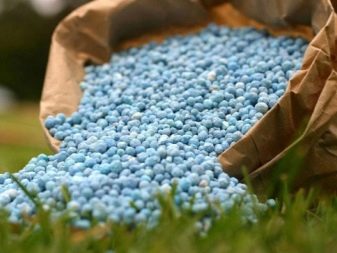
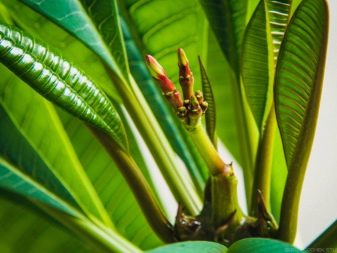
Transfer
The plant needs an annual transplant in the first 3-4 years of its life. Do this in the spring, picking up a slightly larger container each time. At the bottom of the pot, it is necessary to lay out a layer of expanded clay or other drainage with a thickness of at least 2 centimeters. Then a little fresh earth is poured on top, and a flower with an old earthen lump is placed in the center of the pot. Earth around the perimeter of the pot is also added, slightly compacting. If after watering or after some time it settles, you need to add more soil. Large plants are not disturbed by frequent transplants. This can be done if the roots really extend well beyond the main pot.
Usually, the transplant is carried out every 3 years (not more often).
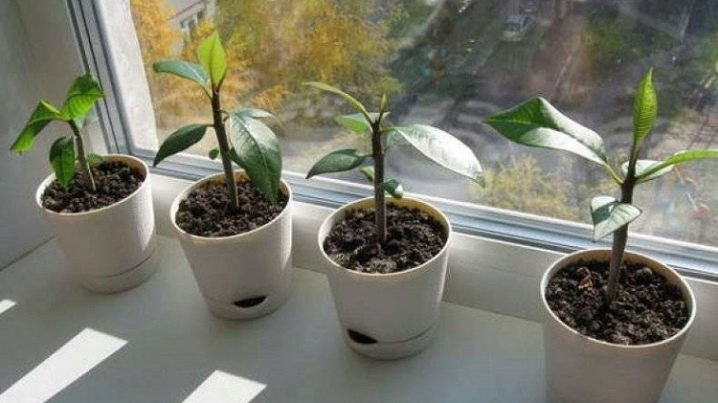
Pruning
Exotic plumeria, with proper care conditions, grows very quickly, so it is annually pruned and a crown is formed. When the plant has faded, it sheds its leaves within a few weeks. At the same time, old, rotten leaves are also removed, helping the plant to get rid of them faster and maintain strength. With the onset of spring and the growth of the first shoots, they begin to cut, shortening especially long, elongated ones.
This process is usually combined with cuttings, cutting off the branches of the previous year for propagation and layering. Be careful when pruning: protect your eyes and skin. If the plant sap gets into it, it can cause an allergic reaction. The juice on the cut of plants or from frangipani leaves is considered conditionally poisonous (albeit to a small extent).
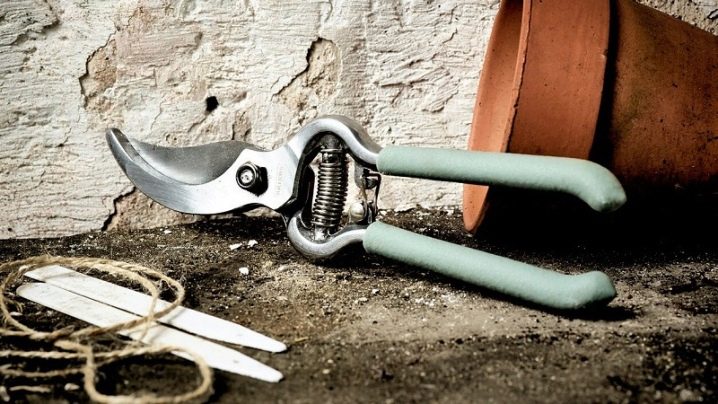
Dormant period
In order for the plant to delight with lush flowering every year, you need to give it a rest at the end of autumn. Usually at this time the flower itself shows that it is time to rest: leaves fall on the faded plant. We cut off dry and old branches for him, remove the remaining unhealthy leaves (if any).
Plumeria spends wintering in a place with a moderate temperature of + 16 ... 18 degrees. The plant should be protected from drafts and the pot should not be overcooled. The frequency and volume of watering are significantly reduced, feeding is practically stopped.
It is also important to reduce the illumination, for example, you can do this by moving the pots to the west window.
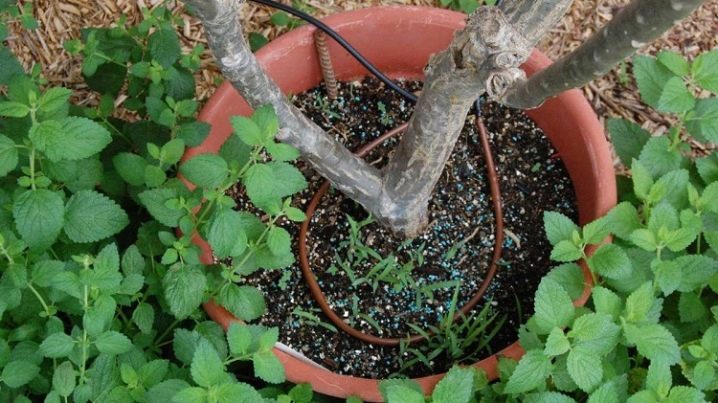
Reproduction
Plumeria reproduces not only by seeds, but also by cuttings. The shoots take root well if they are properly prepared and the conditions necessary for growth are created. In the spring, when pruning, twigs from last year are chosen, on which the bark has already become somewhat lignified. Their length should be at least 30-40 cm. Carefully cutting, they are dipped into a solution that promotes rooting (can be purchased at any store).
At this time, a container with nutritious well-drained soil is prepared. The earth needs not only to be moistened, but also to be prewarmed. Otherwise, in cold ground, the stalk can rot. The shoots are planted in the ground and covered, organizing a warm and humid climate with a temperature of at least +25 degrees. After about a month, the stalk takes root.
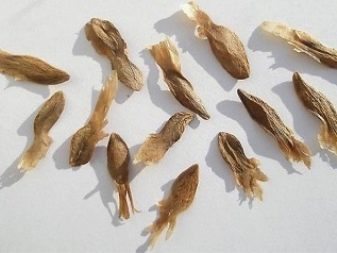
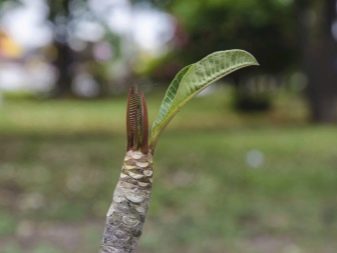
Diseases and pests
If you take proper care of the plant, regularly spray it, then you should not be afraid of pests. However, the flower can be affected by spider mites. In this case, the plumeria needs to be rinsed well, and treated with a special composition from the very pest that you found. The treatment may have to be repeated if the plant is severely affected.
If the leaves turn yellow, flowers fall, this is most often due to a lack of moisture. And it can also happen when the roots rot, if there is no high-quality drainage in the container, and the water is constantly stagnant there.

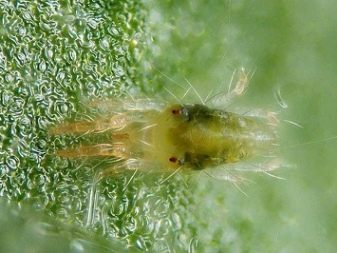







































































































The comment was sent successfully.